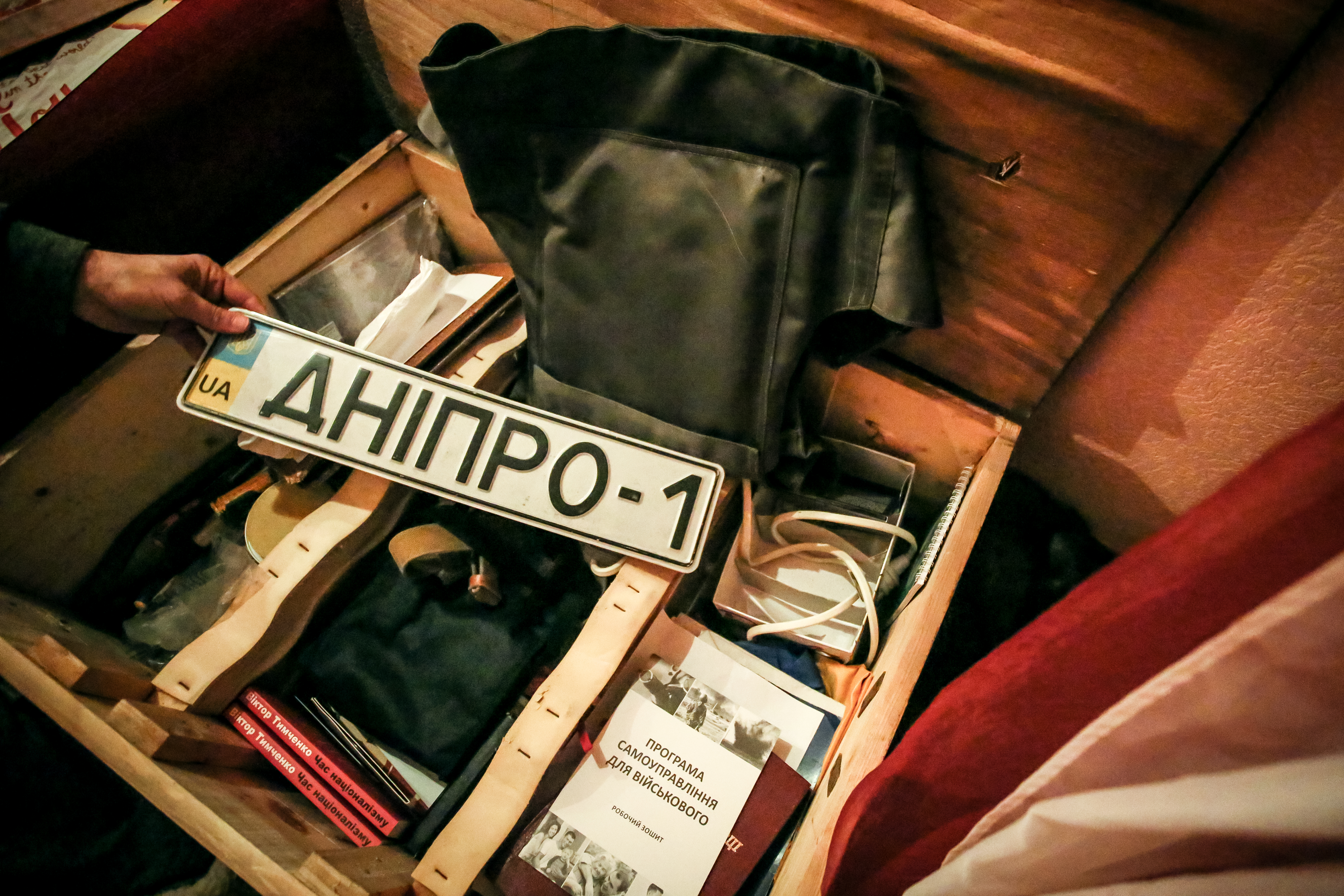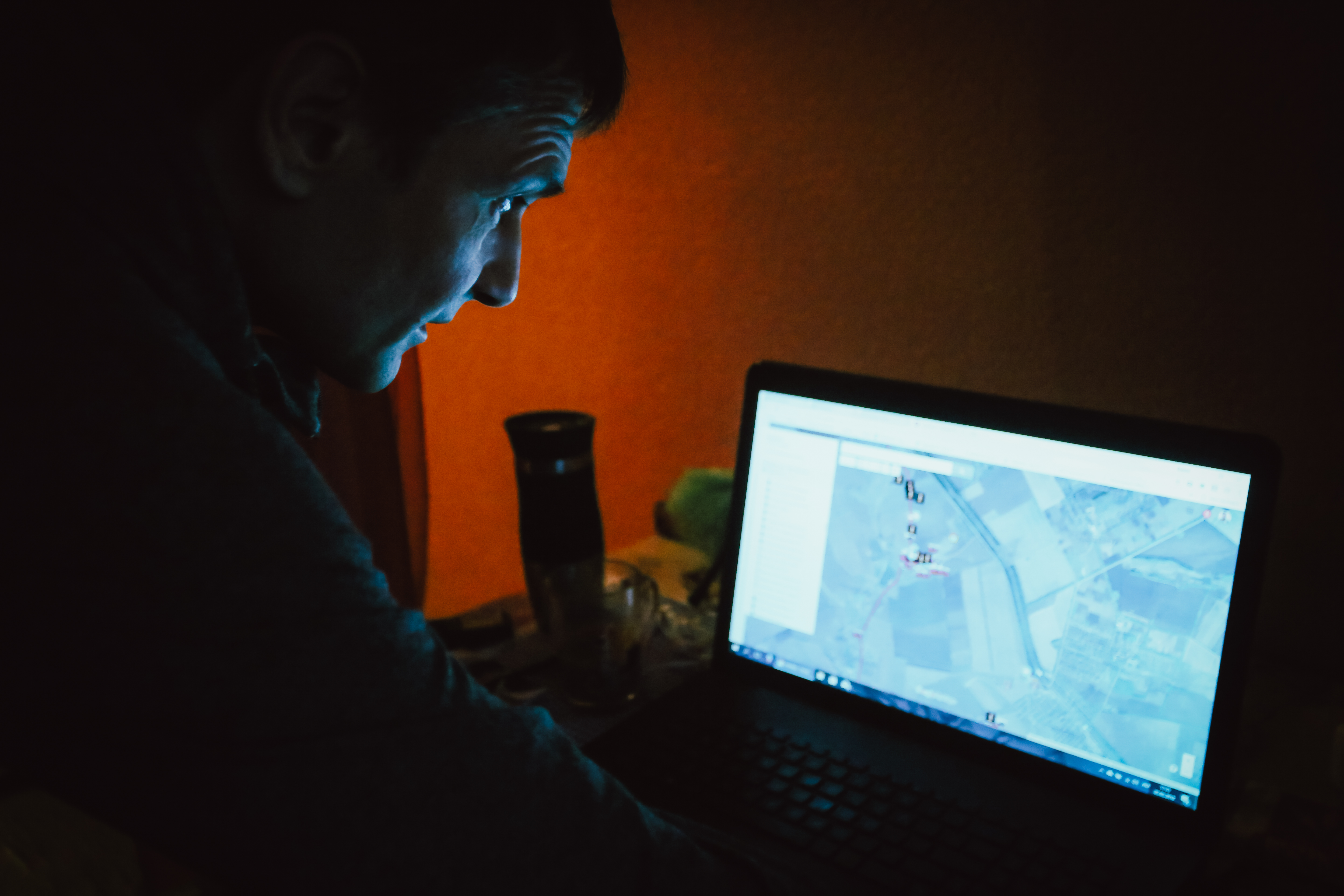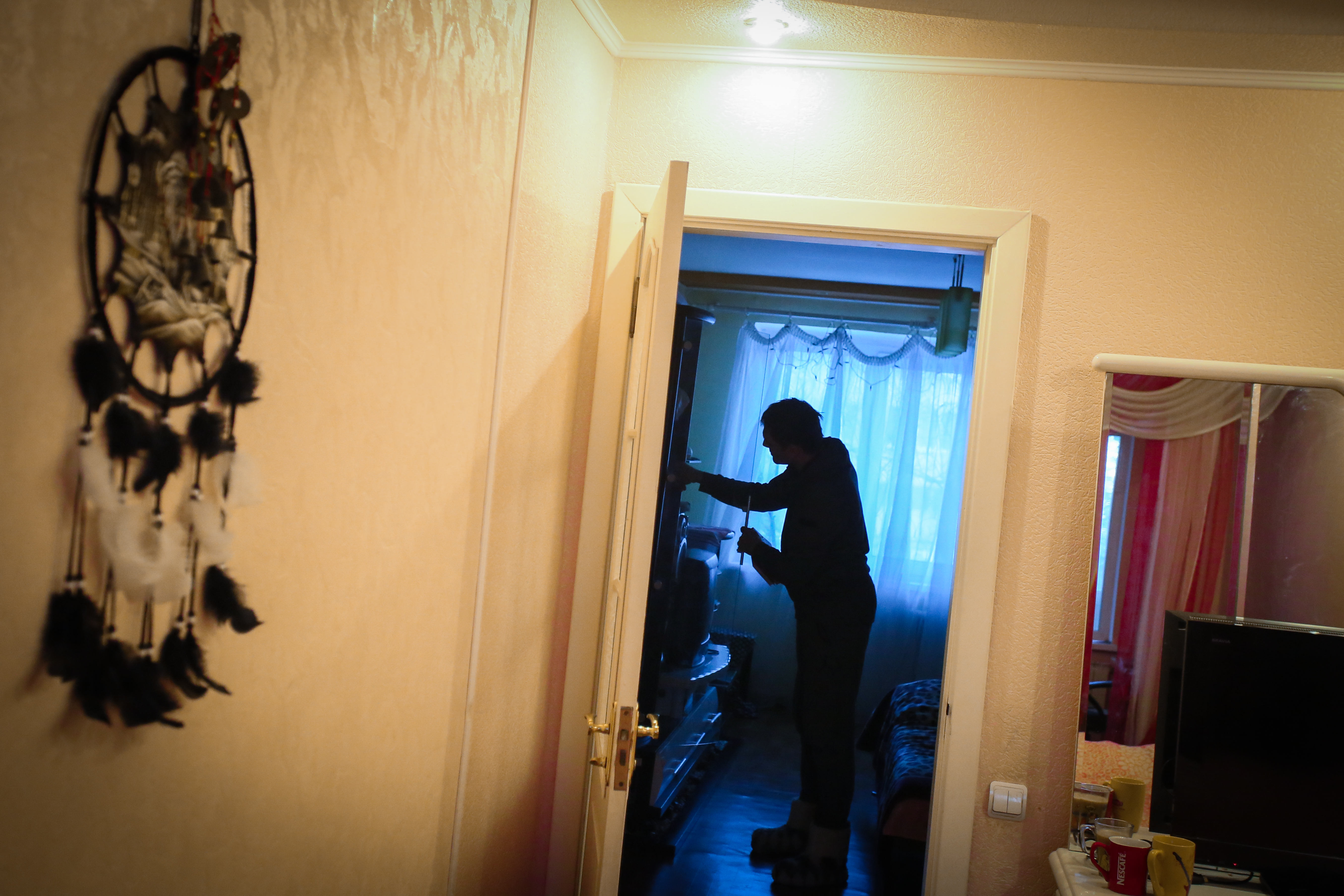Aug. 22, afternoon. A road in the city of Ilovaisk
A flock of pigeons flapped swiftly away from a green minivan driving at full speed. One bird disappeared under the bumper of the vehicle, and managed to fly away only at the very last moment.
Roman Zinenko, a soldier of Dnipro 1 volunteer battalion, who was driving the minivan, took that as a good omen, meaning that he would survive just like the pigeon did.
It had been two days since Zinenko, along with dozens of soldiers of his battalion, had arrived in Ilovaisk with the task of clearing the city of Russian-led forces. But he soon realized that the mission would be much harder to accomplish than they had thought, if possible at all.
“We were told there were several dozen helpless guys with hunting rifles. But it turned out that it was a well-fortified area,” he said. “There were mortars, anti-tank guns and machine guns firing at us.”
Kindergarten stronghold
Zinenko was among the first 40 fighters to undergo military training in April 2014 and be sworn in to serve in Dnipro 1 volunteer battalion, which was formed to help the police defend his native Dnipropetrovsk Oblast.
The battalion was financed and supplied by then-Dnipropetrovsk Oblast governor, the oligarch Ihor Kolomoisky. That was why in Ilovaisk the battalion’s fighters traveled in three bulletproof cash delivery minivans, which belonged to Kolomoisky’s PrivatBank. Zinenko was the driver of one of them.
Dnipro 1 managed to get into the city on Aug. 21 after several unsuccessful attempts, during which they lost two soldiers.
The Ukrainian troops took the eastern half of the city, which was bisected by a large railway junction. The Ukrainian-controlled area contained small private houses and had few places that could be turned into fortified positions.
The Donbas volunteer battalion had set up their positions in the local school. So the Dnipro 1 soldiers decided to set up theirs in the kindergarten and the area 200 meters around it.
The soldiers were supposed to take the new areas, spot enemy fighters, and maintain their positions overnight.
“It was not the job of police units to storm the cities, but we did it because nobody else could do it,” Zinenko said. He added that those forces had not been strong enough to hold the area.
“Every day we were waiting for some reinforcements from the National Guard,” he said.
Blowing up the railway
Later that day, sappers from the Donbas battalion asked Zinenko’s unit to help them with blowing up the local railways, which were still being used by Russian-led force to bring arms and men to Ilovaisk from the nearby Khartsyzsk.
The railways were located right on the frontline, so getting to them was particularly dangerous.
“We were working as a reconnaissance unit and were covering the sappers,” Zinenko said.
A dozen Dnipro 1 fighters broke into an industrial building by the railroad and found there several radios, likely left by the Russian-led forces. Then they signaled to the sappers that the area was clear.
The sappers arrived in a military ambulance. They worked quietly, using four anti-tank mines and TNT blocks to blow up the rail junction.
The four explosions destroyed the five rail lines that connected Ilovaisk with the main Donbas cities, and with Russia. Parts of the rail lines were blasted hundreds of meters away from the epicenter of the explosion. Zinenko was so excited by the operation that he filmed the explosions on his cell phone, ignoring warnings that he could be injured by the blast.
Questions and memories
But the hardest fighting was yet to come. On Aug. 26, the defenders of Ilovaisk were shelled by Grad rockets. Another three soldiers from Dnipro 1 were killed. The battalion had to leave its positions at the kindergarten and dig in at the school.
On Aug. 29, Zinenko lost his commander and best friend Denys Tomilovych when the Ukrainian military column was shelled by Russian troops. He luckily survived, walking on foot with a group of soldiers, some of whom were seriously wounded, from the Russian-held village of Novokaterynivka. Without any food or drink, it took them three days to reach Ukrainian positions.
Zinenko left Dnipro 1 in 2016, saying his unit was losing its fighting spirit and turning into an ordinary police force.
“Some policemen were coming there to avoid lustration or to gain the status of combat participants. The primary aim of Dnipro 1 disappeared,” he said.
But the battle of Ilovaisk still haunts him.
So Zinenko combines his work as an Uber driver in Dnipro with writing down his memories of Ilovaisk. He has published a book of his own experiences, and is now working to collect the stories of nearly 70 Ukrainian soldiers and officers who fought there.
He thinks it may help to preserve the memory of his killed friends, and shed more light on those tragic events.
“The topic of Ilovaisk is still closed. A lot of things have been covered up,” he said.
The Dnipro 1 volunteer battalion was formed in April 2014 as a special police force to defend Dnipropetrovsk Oblast, located next to the embattled Donbas. The then-Dnipropetrovsk Oblast governor, oligarch Ihor Kolomoisky, supported the battalion and paid its soldiers, a fact that caused critics to call Dnipro 1 Kolomoisky’s private army. The battalion’s soldiers participated in the battle for Ilovaisk from Aug. 18, 2014, and lost 17 soldiers during the operation. Battalion head Yury Bereza was elected to parliament in autumn 2014. In September 2014, Dnipro 1 was turned into a special police regiment. Its soldiers still serve in the Donbas, patrolling the war-torn region along the second line of defense.







